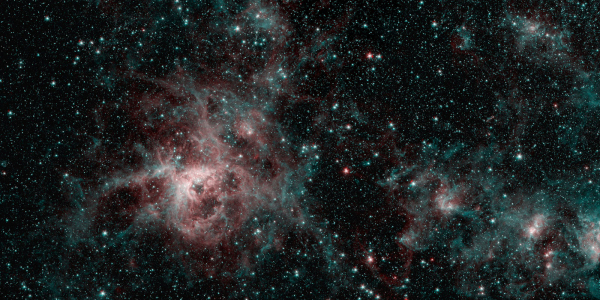Colloquium: The Laboratory Analysis of Solar Matter and Implications for Nebula Chemistry
Recent astronomical observations make clear that planetary systems are a common side effect of star formation. Theory requires and observations demonstrate that the interstellar gas and dust, most of which ultimately falls together to become the star, first passes through an accretion disk out of which some high angular momentum material may form condensed objects (planetesimals). In this “standard model,” the materials that go on to comprise planets are well-mixed and thermally processed in the accretion disk leading to the expectation (prediction) that a star and its accompanying planets should share a common composition, apart from possible fractionation (e.g., depletion) of the most volatile elements (H, He, etc.) in planets. This idea is borne out in our own solar system as the chondritic meteorites, representing relatively unprocessed planetesimals from the solar accretion disk (aka the “solar nebula”), have the same elemental composition as the photosphere of the Sun for all but the most volatile elements. In fact, the match is sufficiently robust that for many minor and trace elements the so-called solar composition is defined, curiously, by a rock that fell into France in 1867. As philosophically unsatisfying as this understanding of “solar composition” may be, an even larger problem arises with the consideration of isotopic abundances, which are generally not measurable from photospheric observations. Because the Sun and its planets formed from the same mix of material, the standard model implicitly assumes that, with a few well-understood exceptions, it is possible to define a homogeneous, initial or “primordial,” isotopic composition of the solar system. However, for the most abundant element in rocky planets, oxygen, this has been known to be untrue for decades. Other, much smaller, "isotopic anomalies" discovered in meteorites and comet dust add to the evidence that the standard model is wrong in that it must be missing fundamental processes characterizing the formation of our Solar System (and possibly others as well).
NASA flew the Genesis Discovery Mission to return a small bit of the Sun to the Earth so that understanding of the solar composition can be based more directly on analyses of solar matter. This talk will describe the Genesis mission and its first-order results that clearly demonstrate that the rocky materials of the inner solar system, including Earth, are highly enriched in the heavy isotopes of oxygen and nitrogen compared to the average starting composition of the solar nebula which is preserved in the Sun. These gross isotopic anomalies have significant implications for understanding major chemical processing of matter in the solar nebula during the epoch of planetary accretion.

